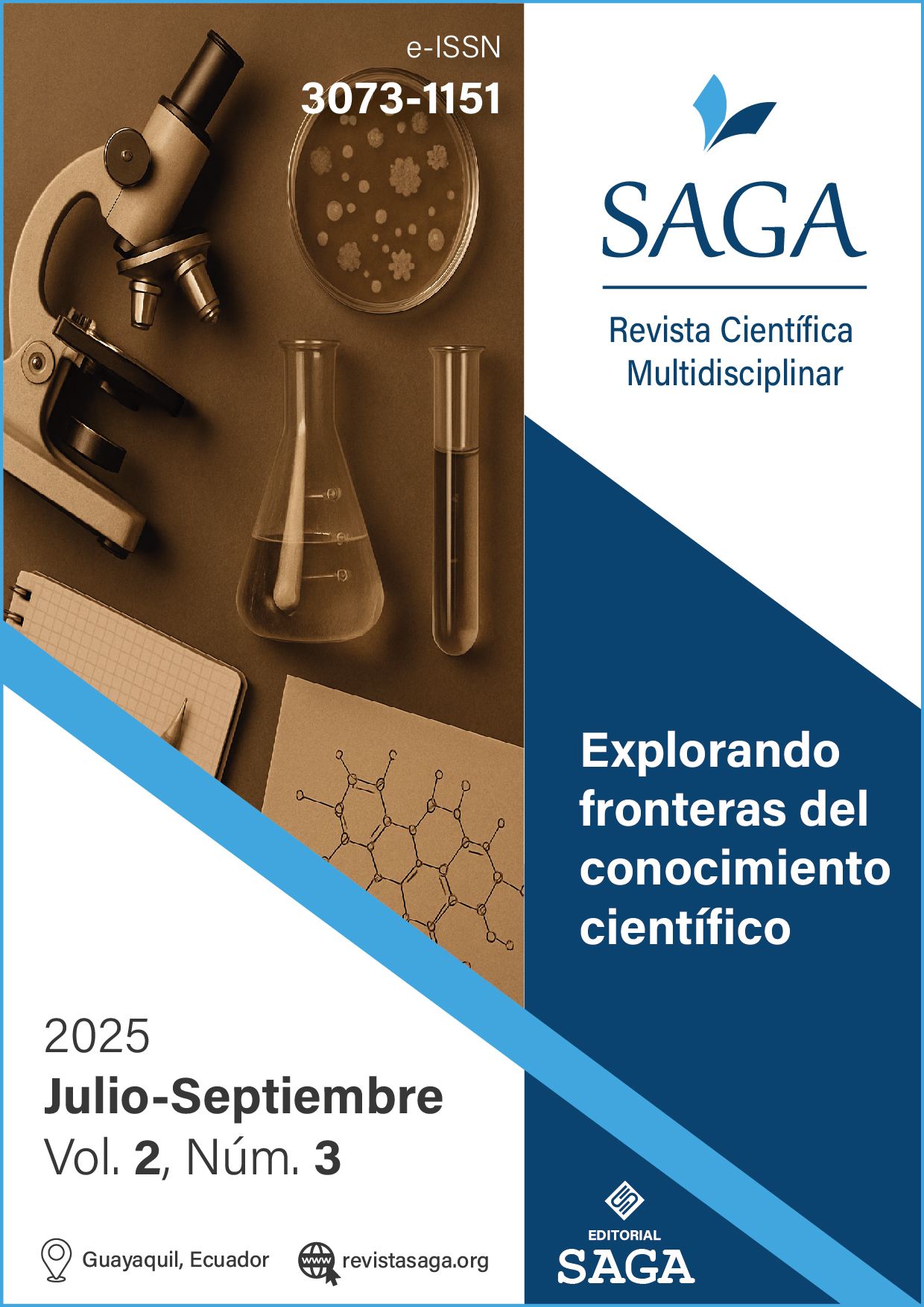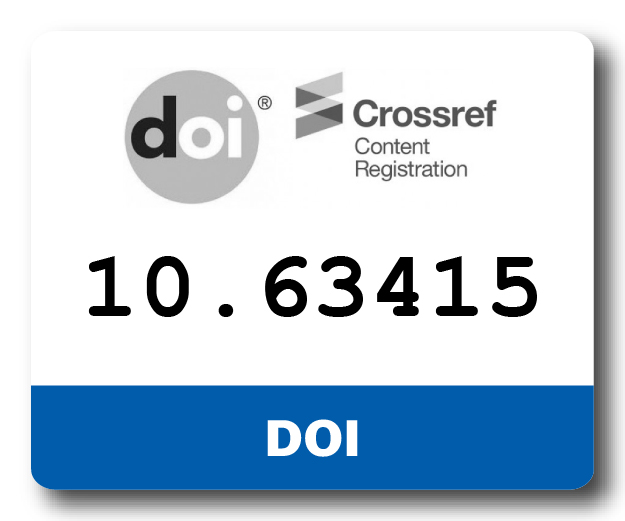Nuevas perspectivas en el tratamiento del dolor crónico: de la farmacología a las terapias complementarias
DOI:
https://doi.org/10.63415/saga.v2i3.171Palabras clave:
acupuntura, dolor crónico, fisioterapia, modelos biopsicosociales, opioides, terapias complementariasResumen
Este artículo analiza nuevas perspectivas para tratar el dolor crónico, examinando la transición de la farmacoterapia convencional hacia enfoques integrales que combinan intervenciones farmacológicas con terapias complementarias y modelos interdisciplinarios. Se revisaron 24 publicaciones científicas recientes mediante un análisis documental cualitativo. Los documentos seleccionados describen la eficacia de opioides, AINEs, antidepresivos y anticonvulsivantes, así como estrategias como terapia cognitivo-conductual, fisioterapia, mindfulness, yoga y acupuntura. El estudio resalta que la mayoría de las investigaciones apoya la combinación de tratamientos farmacológicos con intervenciones no farmacológicas para optimizar el control del dolor y mejorar la calidad de vida del paciente. Se identificaron elementos clave de los modelos biopsicosociales, como la evaluación integral, la planificación individualizada, la educación en autocuidado y la participación de equipos multidisciplinarios. Se reconoce como limitación principal la heterogeneidad metodológica de los estudios revisados y la concentración de datos en países de altos ingresos. Se recomienda profundizar en investigaciones multicéntricas y estudios de costo-efectividad que validen la implementación de estos modelos en contextos diversos. Los hallazgos confirman la necesidad de replantear estrategias tradicionales y consolidar programas de manejo del dolor crónico basados en evidencia, interdisciplinarios y centrados en la persona.
Descargas
Referencias
● Attal, N., Bouhassira, D., Baron, R., Dostrovsky, J. O., Dworkin, R. H., Finnerup, N. B., ... & Rice, A. S. (2010). EFNS guidelines on the pharmacological treatment of neuropathic pain: 2010 revision. European Journal of Neurology, 17(9), 1113–e88.
● Bicket, M. C., Dunn, R. Y., & Dombrowski, M. (2018). Epidural injections for spinal pain: A systematic review and meta-analysis evaluating the ‘control’ injections in randomized controlled trials. Anesthesia & Analgesia, 127(2), 543–552.
● Breivik, H., Eisenberg, E., & O’Brien, T. (2013). The individual and societal burden of chronic pain in Europe: The case for strategic prioritisation and action to improve knowledge and availability of appropriate care. BMC Public Health, 13(1), 1–14.
● Bril, V., England, J., Franklin, G. M., Backonja, M., Cohen, J., Del Toro, D., ... & Zochodne, D. (2011). Evidence-based guideline: Treatment of painful diabetic neuropathy. Neurology, 76(20), 1758–1765.
● Cherkin, D. C., Sherman, K. J., Balderson, B. H., Cook, A. J., Anderson, M. L., Hawkes, R. J., ... & Turner, J. A. (2016). Effect of mindfulness-based stress reduction vs cognitive behavioral therapy or usual care on back pain and functional limitations in adults with chronic low back pain. JAMA, 315(12), 1240–1249.
● Chou, R., Gordon, D. B., de Leon-Casasola, O. A., Rosenberg, J. M., Bickler, S., Brennan, T., ... & Wu, C. L. (2016). Management of postoperative pain: A clinical practice guideline. The Journal of Pain, 17(2), 131–157.
● Cohen, S. P., Vase, L., & Hooten, W. M. (2021). Chronic pain: An update on burden, best practices, and new advances. The Lancet, 397(10289), 2082–2097.
● Dworkin, R. H., O’Connor, A. B., Backonja, M., Farrar, J. T., Finnerup, N. B., Jensen, T. S., ... & Wallace, M. S. (2007). Pharmacologic management of neuropathic pain: Evidence-based recommendations. Pain, 132(3), 237–251.
● Dworkin, R. H., Turk, D. C., Peirce-Sandner, S., Baron, R., Bellamy, N., Burke, L. B., ... & Rappaport, B. A. (2012). Research design considerations for confirmatory chronic pain clinical trials: IMMPACT recommendations. Pain, 153(6), 1148–1158.
● Eccleston, C., Fisher, E., Craig, L., Duggan, G. B., Rosser, B. A., & Keogh, E. (2014). Psychological therapies (internet‐delivered) for the management of chronic pain in adults. The Cochrane Database of Systematic Reviews, 2.
● Eccleston, C., Fisher, E., Law, E., Bartlett, J., & Palermo, T. M. (2017). Psychological interventions for parents of children and adolescents with chronic illness. The Cochrane Database of Systematic Reviews, 8.
● Finnerup, N. B., Attal, N., Haroutounian, S., McNicol, E., Baron, R., Dworkin, R. H., ... & Wallace, M. (2015). Pharmacotherapy for neuropathic pain in adults: A systematic review and meta-analysis. The Lancet Neurology, 14(2), 162–173.
● Gatchel, R. J., McGeary, D. D., McGeary, C. A., & Lippe, B. (2014). Interdisciplinary chronic pain management: Past, present, and future. American Psychologist, 69(2), 119–130.
● Häuser, W., Bernardy, K., Uçeyler, N., & Sommer, C. (2012). Treatment of fibromyalgia syndrome with antidepressants: A meta-analysis. JAMA, 301(2), 198–209.
● Häuser, W., Petzke, F., Radbruch, L., & Tölle, T. R. (2016). The opioid epidemic and the long-term opioid therapy for chronic non-cancer pain revisited: A transatlantic perspective. Pain, 157(12), 2673–2676.
● Kamper, S. J., Apeldoorn, A. T., Chiarotto, A., Smeets, R. J., Ostelo, R. W., Guzman, J., & van Tulder, M. W. (2015). Multidisciplinary biopsychosocial rehabilitation for chronic low back pain. Cochrane Database of Systematic Reviews, 9.
● Kress, H. G., Aldington, D., Alon, E., Coaccioli, S., Coluzzi, F., Hui, D., ... & Varrassi, G. (2015). A holistic approach to chronic pain management that involves all stakeholders: Change is needed. Current Medical Research and Opinion, 31(9), 1743–1754.
● Moulin, D., Clark, A. J., Gilron, I., Ware, M. A., Watson, C. P., Sessle, B. J., ... & Morley-Forster, P. K. (2014). Pharmacological management of chronic neuropathic pain: Revised consensus statement from the Canadian Pain Society. Pain Research and Management, 19(6), 328–335.
● Nahin, R. L., Barnes, P. M., Stussman, B. J., & Bloom, B. (2009). Costs of complementary and alternative medicine (CAM) and frequency of visits to CAM practitioners: United States, 2007. National Health Statistics Reports, 18, 1–14.
● Schug, S. A., Palmer, G. M., Scott, D. A., Halliwell, R., & Trinca, J. (2015). Acute pain management: Scientific evidence. Australian and New Zealand College of Anaesthetists & Faculty of Pain Medicine.
● Turk, D. C., Wilson, H. D., & Cahana, A. (2011). Treatment of chronic non-cancer pain. The Lancet, 377(9784), 2226–2235.
● Vickers, A. J., Vertosick, E. A., Lewith, G., MacPherson, H., Foster, N. E., Sherman, K. J., ... & Linde, K. (2018). Acupuncture for chronic pain: Update of an individual patient data meta-analysis. The Journal of Pain, 19(5), 455–474.
● Wieland, L. S., Skoetz, N., Pilkington, K., Vempati, R., & D’Adamo, C. R. (2013). Yoga treatment for chronic non-specific low back pain. The Cochrane Database of Systematic Reviews, 1.
● Wieland, L. S., Skoetz, N., Pilkington, K., Vempati, R., D’Adamo, C. R., & Berman, B. M. (2017). Yoga treatment for chronic non‐specific low back pain. Cochrane Database of Systematic Reviews, 1.
Publicado
Número
Sección
Licencia
Derechos de autor 2025 Jorge Angel Velasco Espinal, Allison Fuentes Vega, Javier Barrera Galván, Jesus Miguel Gama Velázquez, Lizbeth Velazquez Rivera, Alan Emiliano Pineda Castillo, Dylan Ruiz Reyes (Autor/a)

Esta obra está bajo una licencia internacional Creative Commons Atribución-NoComercial 4.0.



























